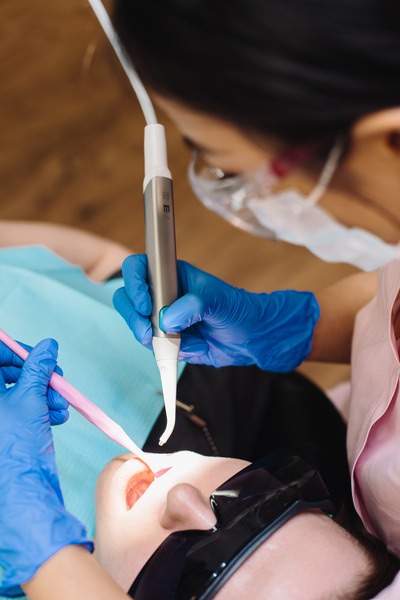If you’ve decided to embark on the journey to a straighter smile with Invisalign, you might be wondering how often you’ll need to make appointments with your dentist. The convenience and relative invisibility of Invisalign have made it a highly popular option for orthodontic treatment. Still, like any medical procedure, it requires a certain level of commitment to regular check-ins and maintenance. Let’s dive into what you can expect when it comes to scheduling your Invisalign dentist visits.
Understanding Invisalign and Your Treatment Plan
Unlike traditional braces that are fixed and only adjusted by your orthodontist every few weeks, Invisalign aligners are removable and replaced with a new set every one to two weeks, depending on your treatment plan. This treatment plan, created using cutting-edge Invisalign technology, dictates not just how often you’ll swap out your aligners but also how frequently you need to see your dentist.
Frequency of Invisalign Dentist Visit
1. The Initial Adjustment Period
After you receive your first set of aligners, your dentist will likely want to see you within the first month. This initial visit is crucial to ensure everything is progressing as expected and to make any necessary adjustments. During this time, you are getting used to wearing your aligners for the recommended 20-22 hours a day. This is also the period when most would have questions or concerns regarding their new treatment.
2. Regular Check-Up Intervals
As you progress in your treatment, you’ll find that appointments become more spread out. Typically, you will need to visit your Invisalign dentist every six to eight weeks. These appointments allow your dentist to monitor your progress, make adjustments to your treatment plan if needed, and provide you with the next series of aligner trays.
3. The Role of Self-Monitoring
With Invisalign: much of the responsibility for monitoring lies with you, the patient. Ensuring that you are following your treatment plan and wearing your aligners as instructed is important in determining the frequency of your visits to the dentist.
Factors That Affect Invisalign Check-Ups
- Complexity of Your Case: The complexity of your orthodontic case plays a significant role in determining the frequency of your Invisalign check-ups. More complex cases, such as those involving severe misalignments or bite issues, may require more frequent monitoring and adjustments to ensure that the treatment progresses as planned.
- Compliance with Treatment: Consistent and diligent adherence to the prescribed treatment plan, including wearing your aligners for the recommended duration each day and following the guidelines provided by your orthodontist, can contribute to the smooth progression of your treatment. Patients who adhere to the treatment protocols are more likely to experience successful outcomes and may require fewer additional visits.
- Unexpected Adjustments: Despite careful adherence to the treatment plan, unforeseen circumstances or unexpected shifts in the teeth may occasionally necessitate additional visits to address any issues that arise during the treatment. These unplanned adjustments may be required to ensure that the treatment continues to progress effectively and that any unexpected issues are promptly addressed.
- Planning for Busy Lifestyles: Understanding the importance of maintaining your visits, dentists try to work with patients’ schedules. Appointments are usually brief and designed to interfere minimally with your daily routine.
Embracing the Check-Up Experience
It’s important to view these visits positively. Regular check-ups give you the opportunity to ask questions and stay informed about your treatment progress. They also serve as a means of reassurance that you are on track to achieving your perfect smile.
The Advantage of Personalized Attention
Each visit is an opportunity to receive personalized care and ensure your treatment is progressing well. Most dentists provide highly individualized schedules that cater to the unique needs of each patient.
Keeping Records of Your Progress
During these appointments, your dentist will also track your progress, documenting changes and making records that can be satisfying to look back on. Seeing how far you’ve come can be a huge motivator.
Unexpected Issues and Emergency Appointments
Sometimes, you may encounter issues that require attention outside of your regular check-up schedule. If you experience any discomfort or if your aligners don’t seem to fit correctly, don’t hesitate to contact your dentist. It’s always better to address such concerns promptly to ensure the continued success of your treatment.
The Link Between Invisalign and Other Dental Procedures
It’s worth noting that Invisalign treatments might be a part of your broader dental care. For instance, before, during, or after Invisalign treatment, you might explore other dental procedures, such as patient-centered dental implant care. Coordinating your schedules can sometimes mean aligning your Invisalign appointments with other dental treatments for efficiency and convenience.
Managing Invisalign Around Dental Implants
For those receiving dental implants, integrating Invisalign treatment requires a strategic approach and careful planning. Your dental provider will consider the timing and healing stages of implants when scheduling your Invisalign check-ups.
Invisalign and Overall Family Dental Health
For those seeking to incorporate Invisalign into the wider context of family oral health, it is beneficial to explore services like comprehensive family dentistry in Mineral VA. This type of dental service ensures that the needs of all family members are met, enabling streamlined care under one roof. When the whole family is taken care of by the same dental practice, it saves time and facilitates better communication between the dentist and your family.
The integration of Invisalign treatment within comprehensive family dentistry means that while one family member might be following an Invisalign plan, others could be receiving cleanings, fillings, or other dental procedures during the same visit periods. This holistic approach simplifies the process and harmonizes dental care with family schedules.
Conclusion
In conclusion, the frequency of your visits to the Invisalign dentist will vary based on the specifics of your treatment plan. The common rule of thumb is every six to eight weeks, but everyone’s smile journey is unique. It’s this commitment to following the tailored treatment plan and attending regular check-ups that will ultimately lead to the best results – a beautiful, straight smile that you’ll be proud to show off. Remember, each dentist visit is a stepping stone toward achieving the smile you’ve always wanted.




